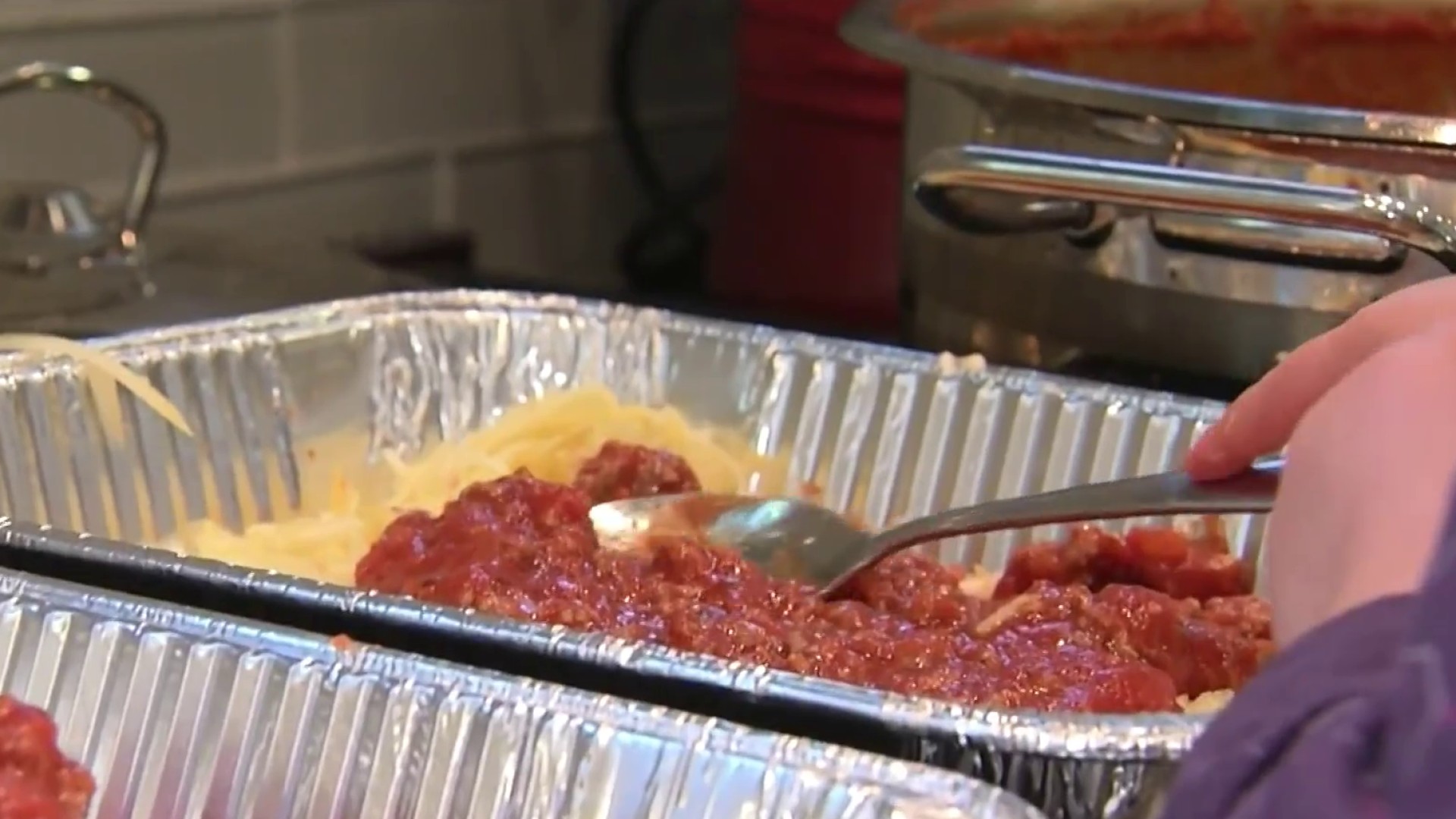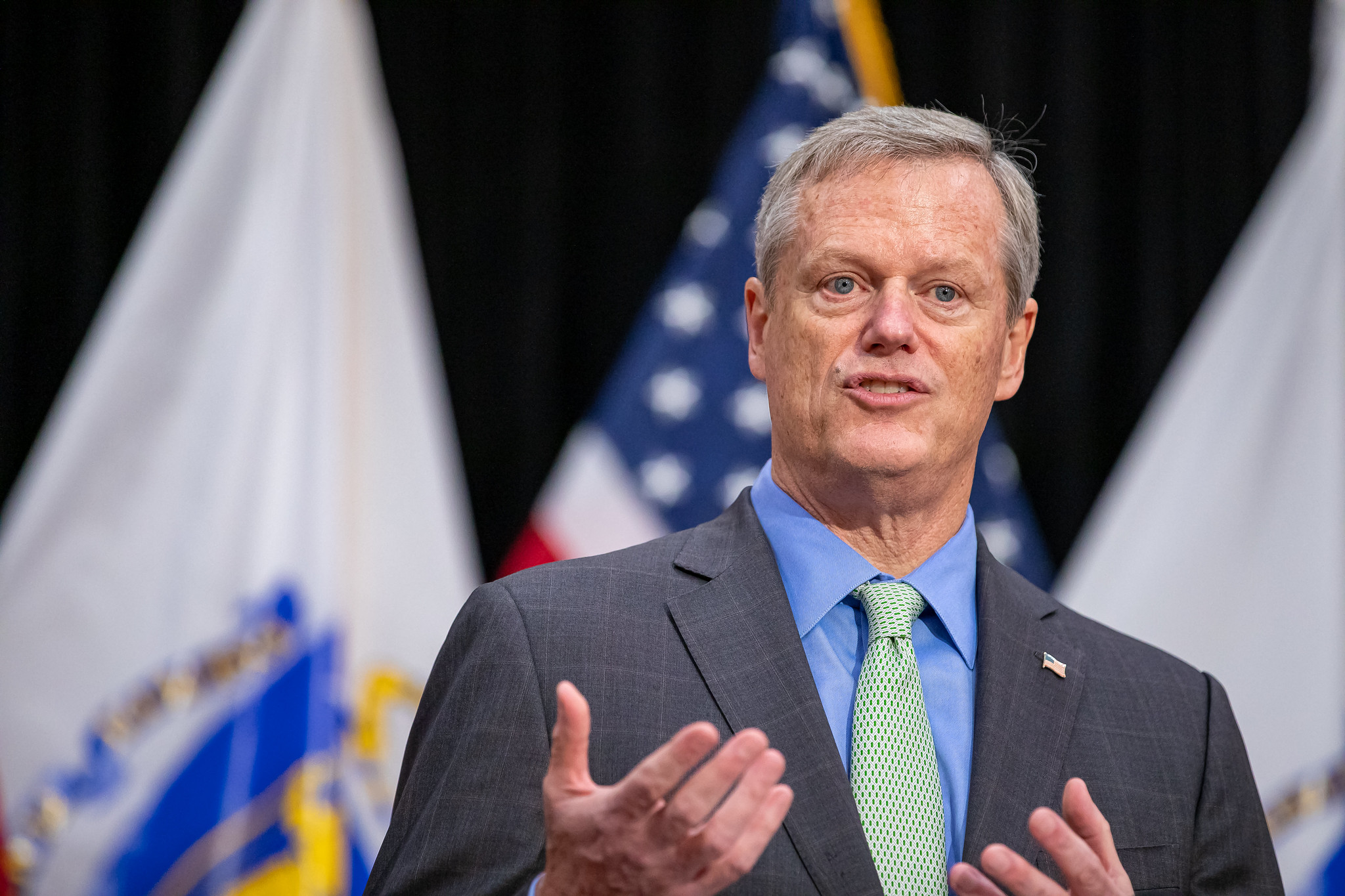For the Baker administration, a month-long train service shutdown on the Green Line is proof that their strategy to improve the MBTA is working.
By shuttering the line's E Branch through the Fenway and Mission Hill neighborhoods, MBTA crews were able to complete as much maintenance as a year's worth of overnight- and weekend-only work at only 70% of the cost, officials said Tuesday.
Gov. Charlie Baker and Transportation Secretary Stephanie Pollack were bullish about that outcome, describing it during a visit to the E Branch's Museum of Fine Arts stop as a milestone along the way toward system-wide and accelerated improvements.
"The real transformation that I've had the pleasure to watch and work with the T team with over these past five years is the transformation of the MBTA into an organization that is capable of delivering what these surges delivered, which is needed improvements to the system delivered on time and on budget or better with minimizing the disruption to the passengers," Pollack said.
Both the August train closure on the E Branch and the July train closure on the C Branch -- both of which required shuttle buses to replace service -- had been planned before the COVID-19 pandemic hit as part of an effort to trade short-term inconveniences for faster achievement of long-term repair goals.
The public health crisis created other opportunities for work on the T, though, with ridership dropping to a fraction of previous levels and still hovering around 25% of pre-pandemic averages as of Tuesday. Officials added lengthier shutdowns to the Red and Blue Lines and several more days to the C Branch.
MBTA General Manager Steve Poftak said crews were able to exceed original goals for the E Line project, replacing more than three miles of 30-year-old tracks, upgrade seven road crossings and five pedestrian crossings, and improve stations.
The track work will help trains move faster, he said, saving commuters an average of one minute per ride.
The administration did not outline any specific plans Tuesday, but Pollack said she looks forward to planning for "future surges and accelerated capital delivery."
"These shutdowns will make sure that the ride on the system is faster and more reliable," Baker said. "Best of all, it will have been done at a point in time when the students weren't here or the schools weren't in session, which dramatically enhances both the quality of the work that gets done on an uninterrupted basis, but also dramatically limits the impact and the disruption that that type of work would have had doing it nights and weekends all the way through the fall and into the winter."
More on the Coronavirus in Massachusetts
Transportation reform had been center stage on Beacon Hill earlier in the year, with the MBTA's aging infrastructure and management practices key areas of focus after a string of derailments. In the wake of last year's Red Line derailment, an independent panel concluded that the T had not prioritized safety culture.
"When the plans began for the July surge on the C Line and the August surge on the E Line, the plan was to shut them down and get the work done before there was a pandemic," Pollack said. "The idea from what we had learned after we experienced the damage to the Red Line was that we owed our passengers and the people of Massachusetts a faster, more efficient plan for fixing the T and for digging it out of the multi-billion dollar maintenance deficit that it had experienced."
The COVID-19 pandemic took over virtually all attention, though, and lawmakers were unable to reach an agreement on a House-approved package of tax and fee increases aimed at directing hundreds of millions of dollars more per year toward roads, bridges and transit.
Baker and Pollack have both expressed skepticism about a gas tax increase or other proposals to direct more operating dollars to the T, instead touting the administration's focus on capital improvement and helping the MBTA build out its capacity to spend on projects.
A roughly $18 billion transportation bond bill also remains tied up and unsettled in the Legislature.
Transit will likely emerge as a campaign issue in 2022 for Baker or other candidates for governor, who will measure the impacts of the administration's work against arguments that the system still needs more investment.
"The transportation landscape obviously looks a lot different than it did in March, but we're still committed to improving the core infrastructure of the T," Baker said. "We're currently in the midst as most people know of a five-year, $8 billion capital investment plan, which is delivering a record level of spending on upgrades and modernization of a core system. Signals, switches, tracks -- all the stuff we love that never gets the attention it deserves, but has a profound impact on the system's capacity to serve the folks who ride it every day."
Pollack said Tuesday that the MBTA has "transformed itself" into an agency that can conduct more than $1.5 billion of work in annual capital improvements, adding that the increase in capital spending alone from FY19 to FY20 outpaced the entire MBTA capital budget just a few years ago.
The MBTA faces a challenging road ahead. Agency officials project a deficit between $308 million and $577 million in fiscal year 2022, then additional deficits in the following three years, largely because of lower ridership as a result of the pandemic.
The Legislature's push this session to generate new funding for the T is effectively over, but the issue will return in the 2021-2022 lawmaking session when the House and Senate vote on whether to place an income surtax on the 2022 ballot aimed at raising money for education and transportation.
Supporters say the proposed surtax of 4% on household income above $1 million could generate $2 billion per year.



